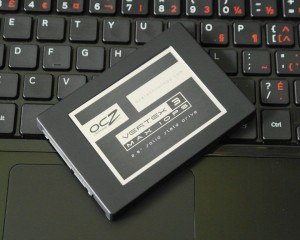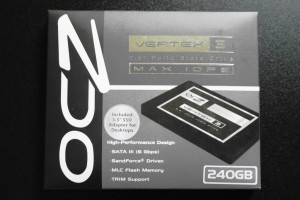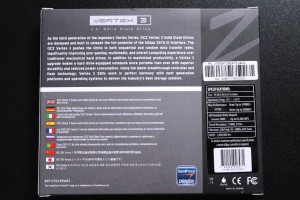
Today we received an e-mail from Jessica Luken, Global Marketing Director of OCZ Technology stating that a new Vertex 3 Max IOPS SSD was en route and, if you would believe it, we received the package not 20 minutes later.
I will have to admit that I was a bit unprepared and stood their wondering what the difference was between the two Vertex 3′s at only a $20 upgrade. The question then presented itself as to whether the consumer would see a marked difference between the two.
A bit of background and several tests later lead us to the belief that the OCZ Vertex 3 Max IOPS SSD just may be the equal to the previous generation SandForce equipped SSDs that utilized the large 27% over provisioning vice the standard 7%, this time around without the massive premium.
INTRODUCTION
It was less than a month ago that OCZ released their announcement of the new V3 MAX IOPS SSD and we noted their statement that this drive was geared towards “users that require greater transactional throughput.” Ryan Peterson, CEO of OCZ, carried on to state “Vertex 3 Max IOPS drives increase random write performance, and are the ideal storage solution for applications that require high aggregate workloads and increased IO throughput.”
We knew immediately that the V3 Max IOPS might be covering off more server based applications and were subsequently met with specifications that differentiated between the Vertex 3 and V3 Max IOPS Edition. At the 240GB capacity that we are testing today, specifications of the Max IOPS list 55000 IOPS read and 65000 IOPS write at 4k aligned whereas it was 40000 and 60000 IOPS with the Vertex 3.
An interesting change does occur with the 120GB version where some are claiming that its performance is now close to the 240GB results which just might be a result of the MaxIOPS increase to 35000 IOPS read and a whopping 75000 IOPS write compared to the Vertex 3′s specs of 20000 IOPS read and 60000 IOPS write at 4k aligned. We hope to get the 120GB version in the near future in order to validate this theory with a 120/240 comparison.
DEPARTURE FROM 25NM NAND
There is a very interesting aspect of this SSD that OCZ has definitely taken the lead on and we are curious as to whether other manufacturers will follow suit. They have moved back to 3xNM NAND and away from the 25nm that seems to have caused alot of confusion with respect to capacities and frustration amongst new Sandforce equipped SSD buyers as many learned that performance is totally dependent on the NAND in use.
 As a bit of clarification for SandForces benefit, their SF-2000 series processors are capable of parallel read and write perfomance in excess of 500MB/s when used in SATA 3 systems and tested with RAW data. Many consumers never realized, however, that performance was totally dependent on the NAND in use, something that was first seen in the performance of different capacity levels of Crucial C300 drives although they were using 3xNM NAND at the time with the Marvell controller. The 64GB write performance was far less than the 256GB version.
As a bit of clarification for SandForces benefit, their SF-2000 series processors are capable of parallel read and write perfomance in excess of 500MB/s when used in SATA 3 systems and tested with RAW data. Many consumers never realized, however, that performance was totally dependent on the NAND in use, something that was first seen in the performance of different capacity levels of Crucial C300 drives although they were using 3xNM NAND at the time with the Marvell controller. The 64GB write performance was far less than the 256GB version.
To take this one step further, NAND is further divided into die which are stacked and increase performance much the same as RAID does (to be very basic and not lose our audience here). The difference in performance originally with the Crucial (althought the controller was different) is exactly the same as what we are seeing with the SSDs using 25nm NAND at present.
2XNM NAND also presents us with another barrier and that is its reduced total write cycle which for the most part has been tackled by firmware changes but is still a concern to many.
Now, in OCZ moving to 3xNM NAND with the Max IOPS, we believe that they may be appeasing to the knowledgeable consumer who has unwittingly educated themselves on the restrictions of 2xNM NAND and it appears that they have done one better yet. 3xNM NAND is much more expensive than 2xNM NAND yet the difference between the Vertex 2 and Vertex 3 is about $20 US.



No comments:
Post a Comment